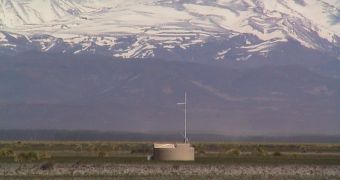From 1990 to 2004, a group of physicists at the Akeno Giant Air Shower Array (AGASA), near Tokyo, Japan, studied the amount of cosmic particles that were hitting Earth and discovered what they claimed to be a tremendous increase in their numbers and in the energy they were carrying, almost 100 times higher than normal.
This excess could not be explained by scientists, since these particles could not have gained so much energy while approaching our planet. The unexplained number of particles seemed to defy the Greisen-Zatsepin-Kuzmin limit (GZK limit), a theoretical upper limit on the energy of cosmic rays from distant sources.
The fact that some cosmic rays appear to possess energies that are theoretically too high, given that there are no possible near-Earth sources and that rays from distant sources in space should have scattered off the cosmic microwave background radiation, was then called the GZK paradox or cosmic ray paradox.
Now, another group of physicists, working at the almost-completed Pierre Auger Observatory on the plains of the Pampa Amarilla in western Argentina say they've solved the mystery.
It seems that this apparent excess of cosmic radiation was nothing more than a matter of different methods used by the detectors to study the rays. The array of 1200 ground detectors and 24 telescopes in Argentina has so far collected enough scientific data to definitely dismiss the excess paradox.
"If the AGASA had been correct, then we should have seen 30 events [at or above the GZK limit], and we see two," says Alan Watson, a physicist from the University of Leeds, U.K. and spokesperson for the Auger collaboration.
So, it would seem that even the brightest scientists get it wrong sometimes and that one of the most important astronomical puzzles of the last decades has finally been solved.

 14 DAY TRIAL //
14 DAY TRIAL //